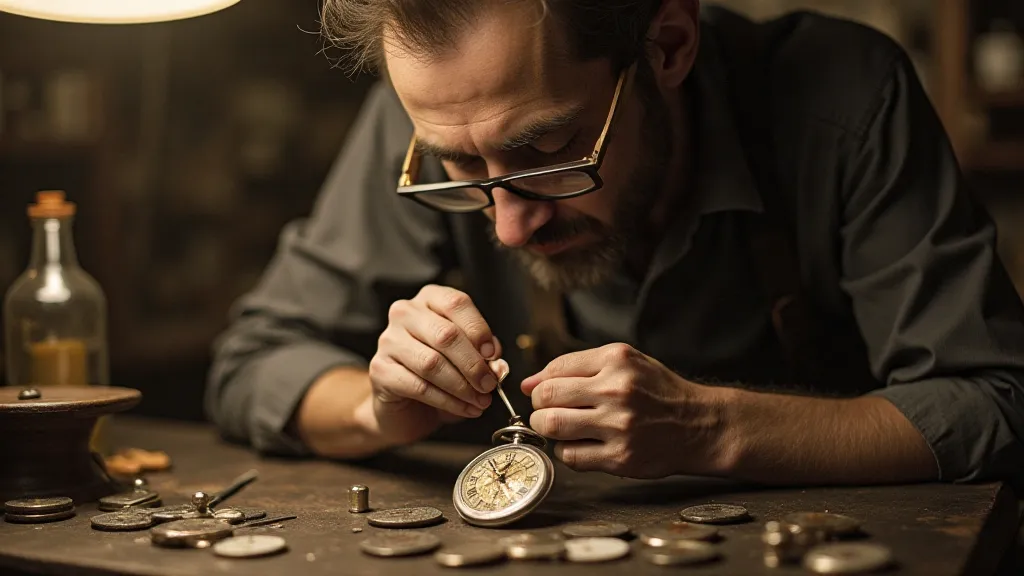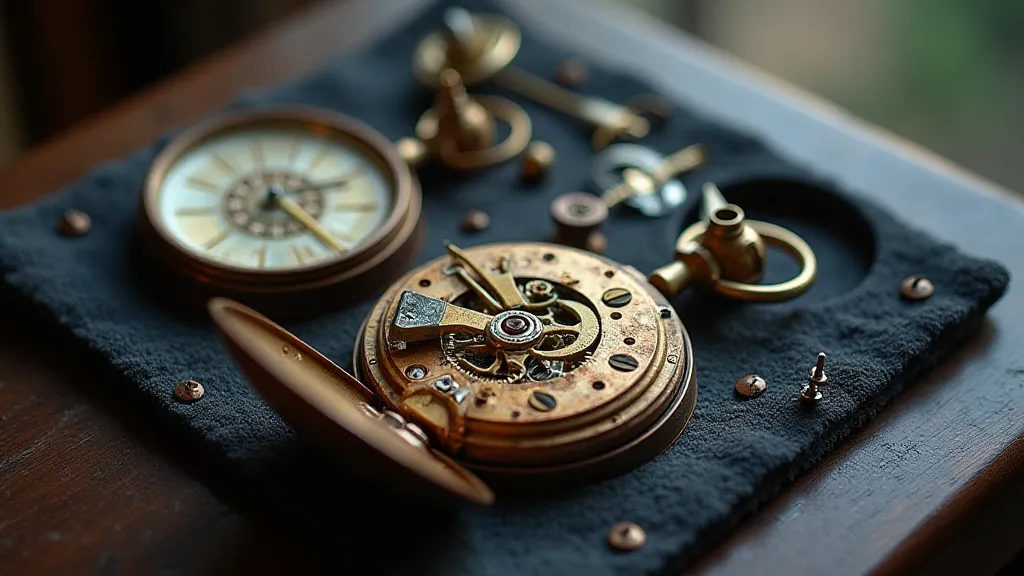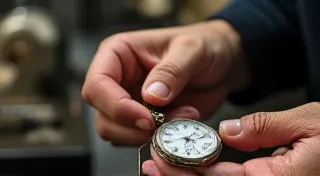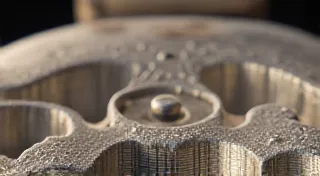The Silent Symphony: Why the Rhythm of a Pocket Watch Reveals Character
There’s a certain magic that clings to a pocket watch. It's not the flashy allure of a modern smartwatch, boasting a million functions displayed across a glowing screen. No, the magic of a pocket watch lies in its quiet contemplation, in the subtle hum that vibrates against your palm, a tiny, measured heartbeat from a bygone era. It’s a connection to history, a tangible link to lives lived and stories untold. Owning one isn’t just about possessing a timepiece; it’s about inheriting a legacy, a silent symphony that whispers tales of craftsmanship, perseverance, and a slower, more deliberate pace of life.
My own journey with pocket watches began unexpectedly. I inherited one from my grandfather, a man of few words and unwavering principles. It wasn't a particularly valuable piece – a simple, silver Elgin from the 1920s – but the moment I held it, I felt an immediate and profound connection. The cool metal against my skin, the click of the cover, the gentle ticking… it transported me. Suddenly, I wasn’t just holding an object; I was holding a memory, a feeling, a fragment of his quiet strength. I hadn't known him well, but through that watch, I felt closer to him than ever before.

A History Etched in Gold and Steel
The history of the pocket watch is as rich and complex as the intricate mechanisms housed within. Before wristwatches became commonplace, pocket watches were the primary means of personal timekeeping, evolving from the bulky, portable clocks of the 16th century. The earliest examples, often commissioned by royalty or the wealthy, were extravagant displays of artistry, adorned with jewels and precious metals. As watchmaking techniques advanced, particularly in Switzerland and America, these exquisite timepieces became more accessible to the burgeoning middle class.
The 19th century witnessed a golden age for pocket watch manufacturing. American watchmakers like Eli Terry and Samuel Curtis pioneered mass production techniques, making reliable, affordable timepieces available to a wider population. The Elgin National Watch Company, established in 1864, became a symbol of American ingenuity and craftsmanship, producing hundreds of thousands of watches that were prized for their accuracy and durability. Swiss brands like Patek Philippe, Vacheron Constantin, and Audemars Piguet continued to push the boundaries of horological innovation, creating masterpieces of engineering and design that remain highly sought after by collectors today.
The Language of Ticks and Tocks
It's the *sound* of a pocket watch that truly sets it apart. The steady *tick-tock* is more than just a measurement of seconds; it's a comforting presence, a rhythmic pulse connecting you to the watch’s history and the countless individuals who have carried it before you. The tone can vary drastically, influenced by the watch's movement (lever, cylinder, key-wind, etc.), the materials used, and even its condition.
A key-wind watch, requiring a winding key to operate, often produces a slower, more deliberate sound – a gentle, almost meditative rhythm. Lever watches, the most common type from the late 19th and early 20th centuries, tend to have a brighter, more energetic tick. The subtle differences are nuances that can be lost on the casual observer, but for the devoted enthusiast, they offer a unique window into the watch’s character.

Beyond Timekeeping: Objects of Art and Narrative
Pocket watches, especially antique ones, are often far more than functional timepieces. They are miniature works of art. The engravings on the cases, the enamel work on the dials, the intricate movements – all are testaments to the skill and artistry of the craftsmen who created them. Many pocket watches were personalized with engravings – initials, dates, or heartfelt messages – transforming them into cherished heirlooms, passed down through generations.
The condition of a pocket watch can also tell a story. A pristine, unblemished watch might have been carefully preserved in a safe deposit box, rarely seeing the light of day. A well-worn piece, with scratches and dents, speaks of a life lived actively, a constant companion through adventures and everyday moments. These imperfections aren’t flaws; they’s character marks, adding depth and richness to the watch’s narrative.
Caring for a Legacy: Gentle Stewardship
Owning an antique pocket watch comes with a responsibility – the responsibility to care for a piece of history. Unlike modern watches, which are often designed for ease of maintenance, antique pocket watches require a more delicate touch. Regular cleaning with a soft cloth is essential to remove dust and grime. Avoid using harsh chemicals, as they can damage the finish.
Servicing, which involves cleaning, lubricating, and adjusting the movement, should be performed by a qualified watchmaker specializing in antique timepieces. Over time, the oils within the movement dry out, leading to increased friction and potential damage. A well-serviced pocket watch will continue to tick faithfully for generations to come. While restoring a pocket watch can be tempting, be mindful of originality. Preservation of original components is often paramount to maintaining historical value.

A Silent Echo of the Past
There's a quiet intimacy that comes with owning a pocket watch. It's a tangible link to the past, a reminder of a time when craftsmanship was valued above speed, and possessions were imbued with meaning. The rhythmic ticking isn’s just counting down the seconds; it’s echoing stories, preserving memories, and connecting us to a legacy of innovation and artistry. It’s more than a watch; it’s a companion, a storyteller, a window into a world long gone. And when you hold it, close your eyes, and listen to its silent symphony, you can almost hear the echoes of those who held it before you, each contributing their own chapter to its enduring tale.





